21 Exercises for Women with PCOS

Living with Polycystic Ovary Syndrome (PCOS) can pose unique challenges for women, particularly regarding weight management. PCOS affects hormone levels, often leading to weight gain, especially around the abdomen, and making weight loss more challenging. However, balanced activity and diet improve weight management.
Challenges Faced by Women with PCOS:
Hormonal Imbalances Create “Belly Pouch”
PCOS creates hormonal imbalances particularly insulin, androgens, and estrogen levels. Higher levels of androgens make weight loss challenging and lead to increased fat storage, particularly around the abdomen [1]
Insulin Resistance Disrupts Normal Fat Distribution
About 85% women with PCOS experience insulin resistance, where cells don’t respond effectively to insulin [2].
Insulin resistance can cause higher insulin levels, which in turn stimulates the production of androgens.
High androgen levels can disrupt normal fat distribution and make it harder to lose weight, especially around the belly area.
Metabolic Issues Make Fat Loss Impossible
PCOS can affect basal metabolic rate, leading to fewer calories burned at rest. It leads to fat accumulation and weight loss seems impossible for women with PCOs.
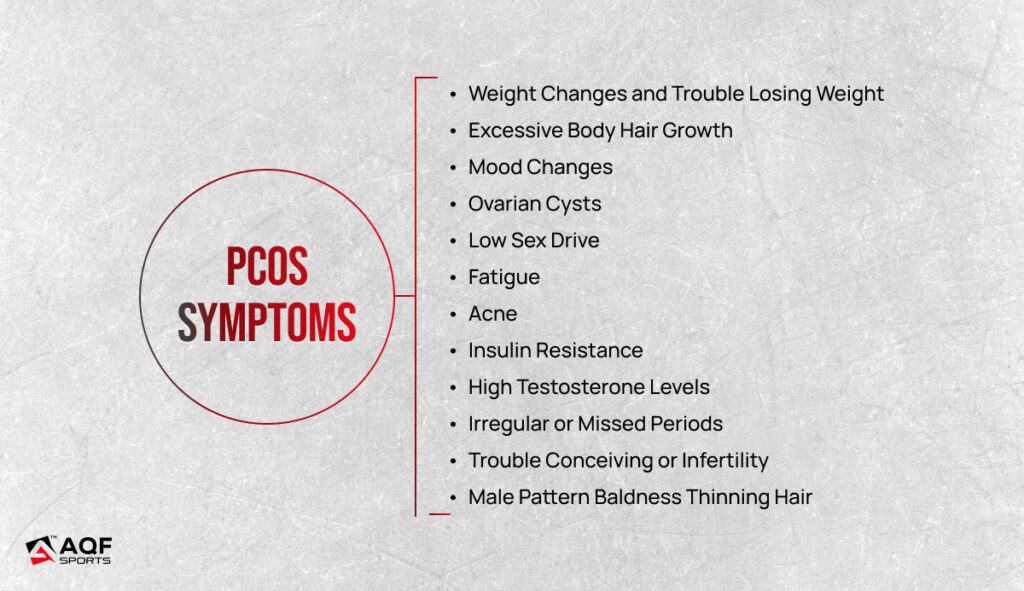
Should women with PCOS exercise?
Women can combat PCOs challenges effectively by increasing their physical activity. Exercise stimulates glucose uptake by muscle cells, reducing blood sugar levels and improving insulin sensitivity. This process helps in better management of insulin resistance.
Physical activity, particularly HIIT and aerobic cardio exercises, break down fat deposits and increase metabolism [3]. Body fat breakdown reduces overall body fat, particularly around the abdominal region.
Strength training exercises promote muscle growth. More muscle mass increases resting metabolic rate, allowing the body to burn more calories even when at rest.
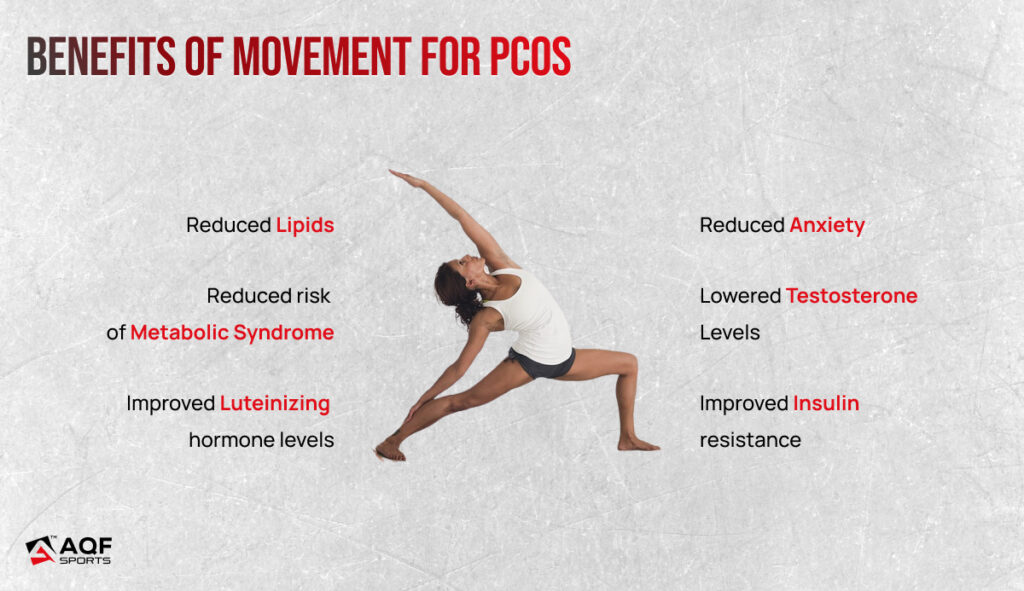
Effective Everyday Exercises for Women with PCOs
Bodyweight Squats
Target Area: Works on quadriceps, hamstrings, and glutes.
Gym Accessories/Equipment: None required, but comfortable clothing is recommended.
Instructions:
- Stand with feet shoulder-width apart.
- Bend your knees and lower your hips as if sitting back into an imaginary chair.
- Keep your chest up and weight on your heels. Return to standing position.
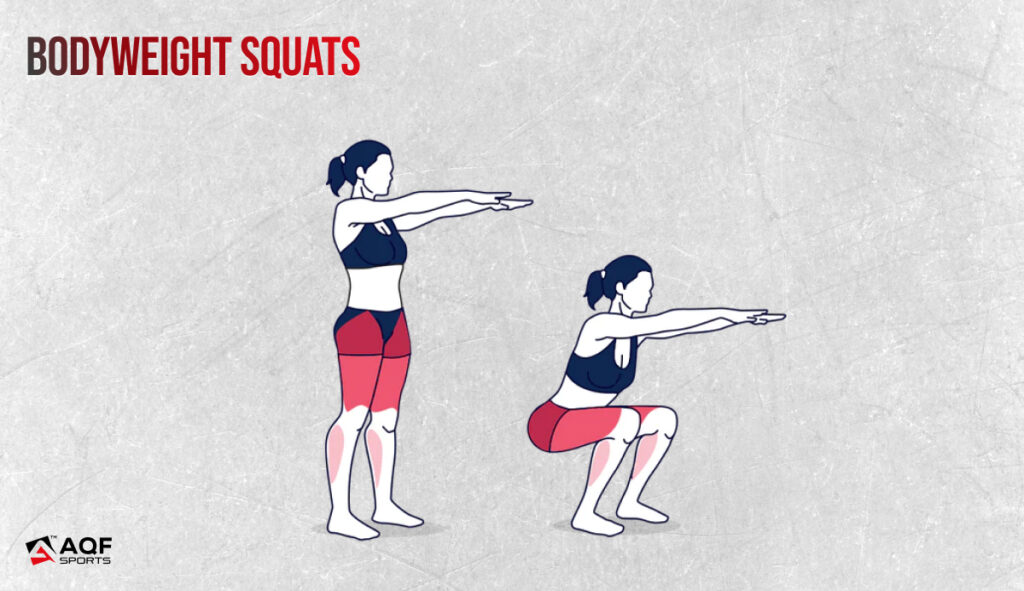
Benefits: Strengthens leg muscles, improves mobility, and can be done anywhere without equipment.
Modified Push-Ups
Gym Accessories/Equipment: Exercise mat (optional), comfortable clothing.
Target Area: Engages chest, arms, and core muscles.
Instructions:
- Start in a plank position on knees and hands.
- Lower your chest towards the ground, keeping elbows close to the body.
- Push back up to the starting position.
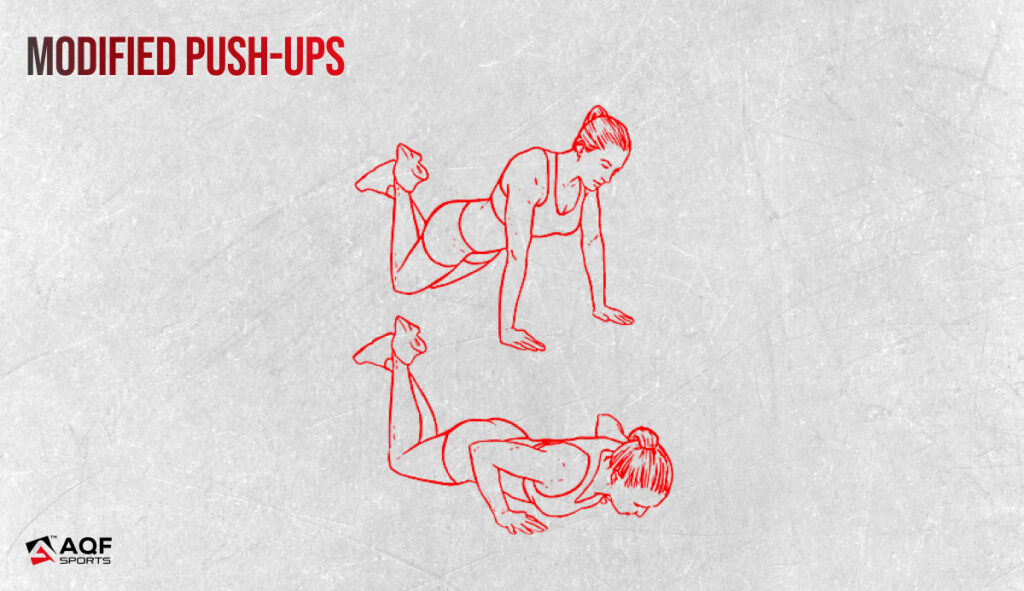
Benefits: Strengthens upper body muscles, especially chest and arms, and can be modified to suit individual fitness levels.
Standing Leg Raises
Gym Accessories/Equipment: None required, but a stable surface for support if needed.
Target Area: Works on hip abductor muscles, improving hip stability.
Instructions:
- Stand straight, holding onto a stable surface for balance if needed.
- Lift one leg to the side while keeping it straight, then lower it back down.
- Repeat on the other leg.
- Wear a resistance band to increase intensity
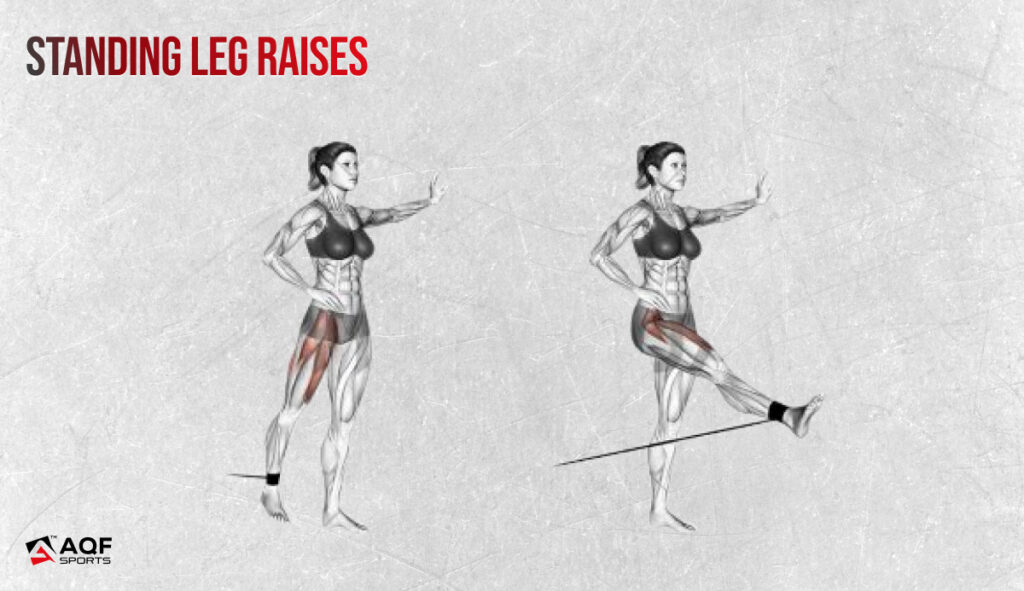
Benefits: Enhances hip strength, stability, and can aid in improving posture.
Seated Leg Extensions
Gym Accessories/Equipment: Chair with back support, comfortable clothing.
Target Area: Targets quadriceps muscles in the front of the thighs.
Instructions:
- Sit on a chair with back support.
- Extend one leg straight out in front of you, hold for a few seconds, then lower it back down.
- Repeat with the other leg.
- Wear a resistance band to increase intensity
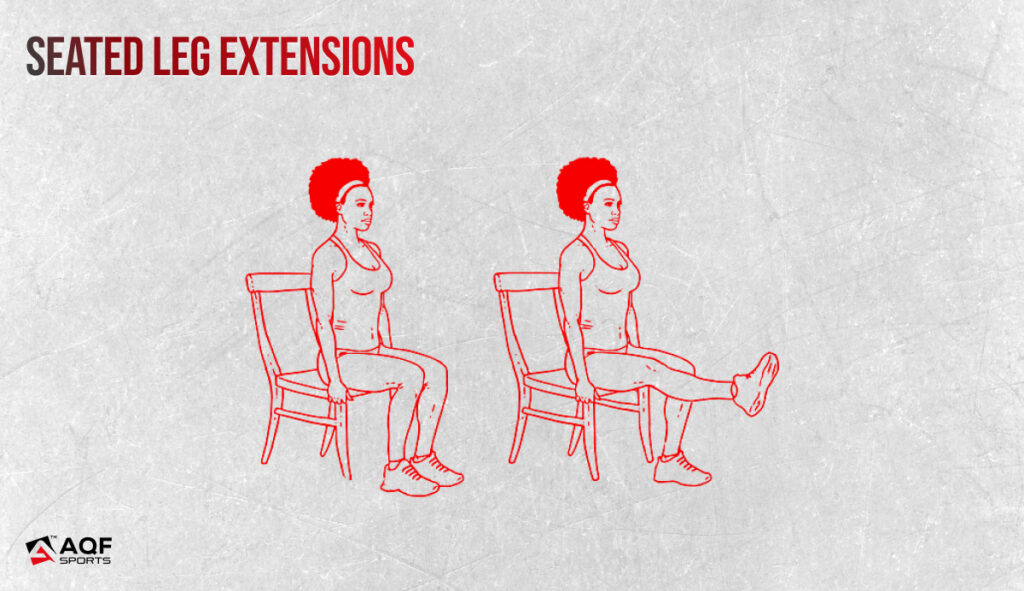
Benefits: Strengthens quadriceps, improves knee stability, and can be done easily at home or in the gym.
Yoga
Instructions:
- Begin with deep breathing.
- Practice yoga poses like the downward dog, warrior poses, and child’s pose.
- Focus on smooth transitions between poses and controlled breathing.
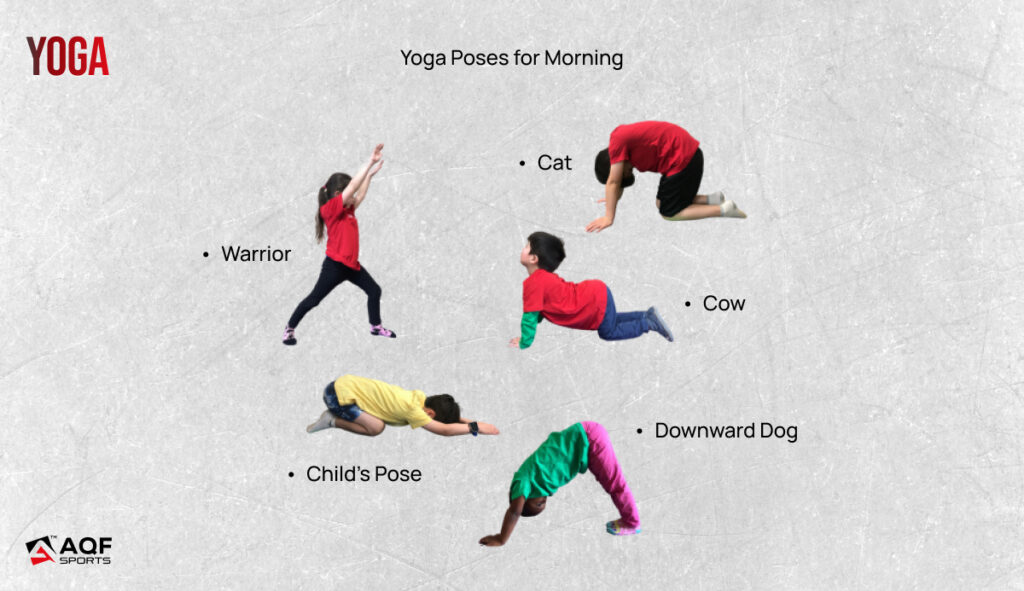
Target Area: Flexibility, core strength, and stress reduction.
Benefits: Reduces stress, improves flexibility, and may aid in hormone regulation.
Gym Accessories/Equipment: Yoga mat, comfortable clothing, and possibly yoga blocks or straps for support.
Suggested Read: 5 Must-Know Yoga Stretches for Beginners
Cycling
Target Area: Lower body, especially legs, and cardiovascular system.
Gym Accessories/Equipment: Stationary bike or regular bike, comfortable cycling attire, and a water bottle.
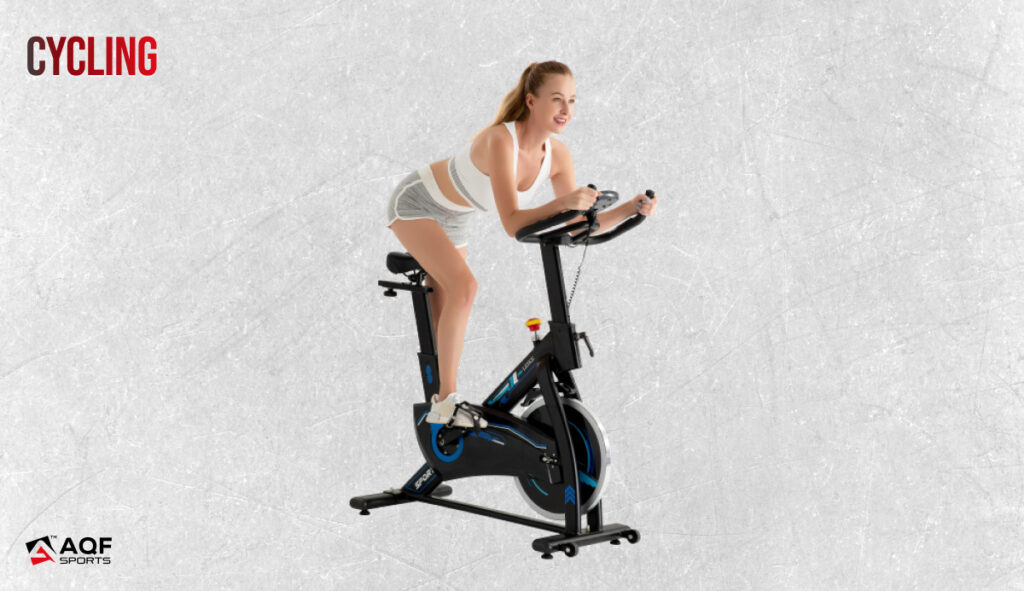
Instructions:
- Begin with a 5-10 minute warm-up.
- Cycle at a moderate pace for 20-30 minutes
- Vary intensity between easy and challenging intervals.
- Cool down for 5 minutes.
Benefits: Aids in weight management, improves cardiovascular health, and reduces stress levels.
Pilates
Target Area: Core muscles, overall strength, and flexibility.
Gym Accessories/Equipment: Pilates mat, comfortable clothing, and possibly a Pilates ball or resistance bands for added challenge.
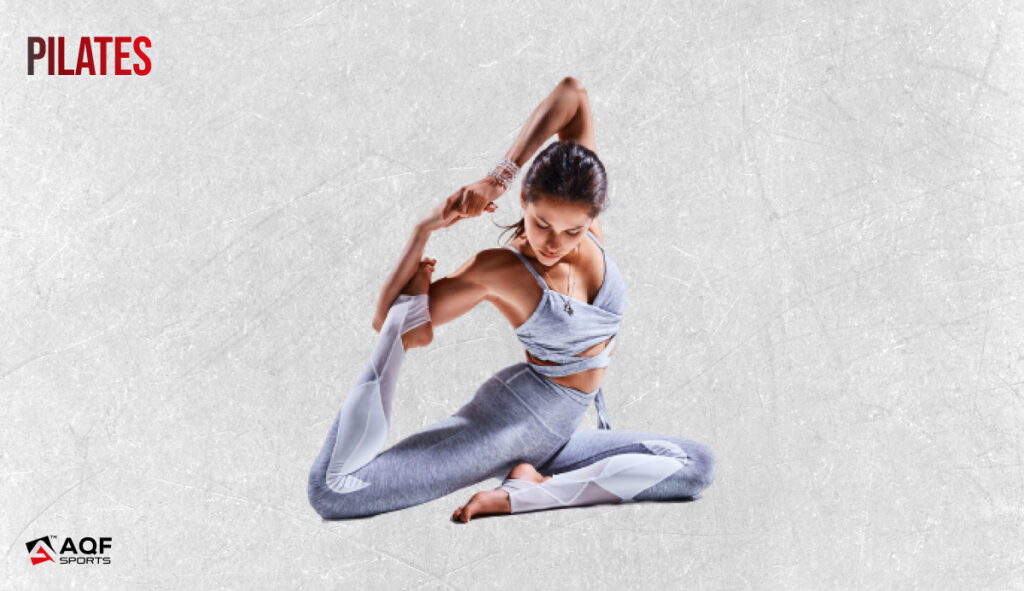
Instructions:
- Focus on controlled movements and breathing.
- Perform exercises like the hundred, leg circles, and pelvic tilts to strengthen the core.
Benefits: Improves posture, strengthens the core, and aids in stress reduction.
Swimming
Target Area: Full body workout, particularly engaging the arms, legs, and core.
Gym Accessories/Equipment: Swimsuit, goggles, and access to a pool.
Instructions:
- Start with a 5-10 minute warm-up swim.
- Swim laps at a moderate pace for 20-30 minutes, alternating strokes if comfortable.
- Finish with a 5-minute cool-down swim.
Benefits: Low-impact exercise aiding in weight management, improving cardiovascular health, and reducing stress.
Low-Impact Aerobics
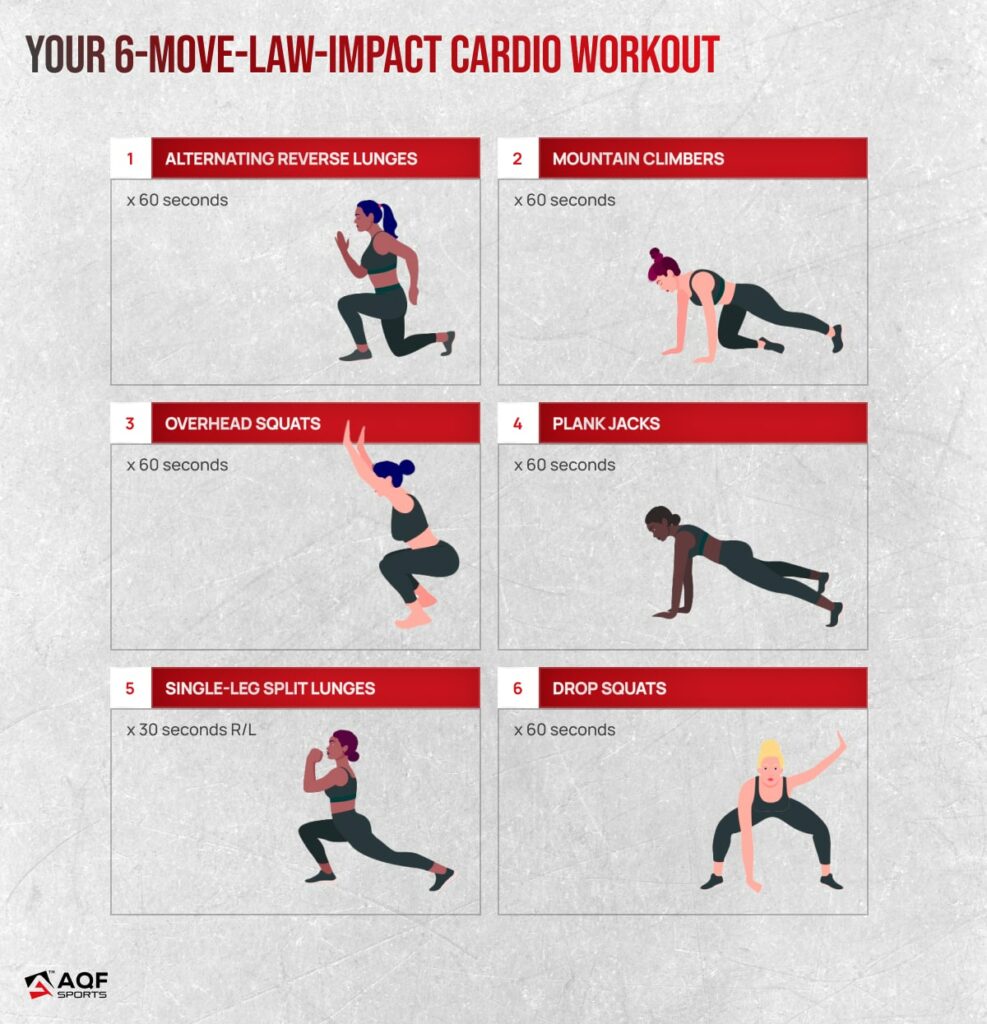
Target Area: Full body engagement with a focus on cardio and muscle toning.
Benefits: Boosts cardiovascular health, aids in weight management, and improves mood through rhythmic movement.
Instructions:
- Join a low-impact aerobics class or follow an online tutorial.
- Perform exercises like step touches, knee lifts, side leg lifts, and gentle dance movements for 20-30 minutes.
Gym Accessories/Equipment: Exercise mat (if needed), comfortable clothing, and supportive shoes.
Which Gym Exercises are Good for Women with PCOs?
Leg Press
Target Area: Primarily targets quadriceps, hamstrings, and glutes.
Gym Accessories/Equipment: Leg press machine, comfortable workout attire, and weight plates.
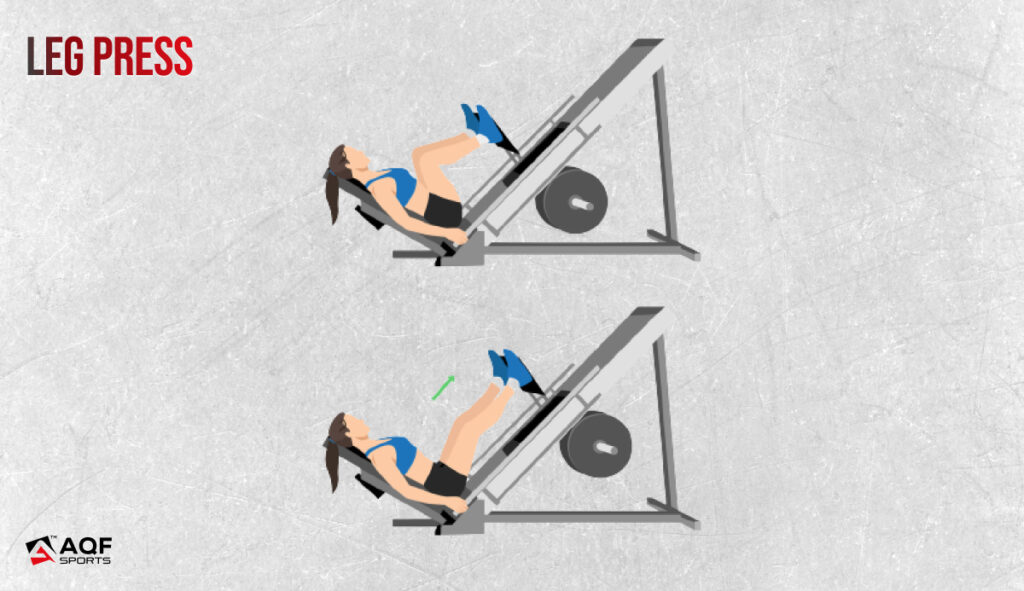
Instructions:
- Sit on the leg press machine, adjust the seat and select a comfortable weight.
- Place feet shoulder-width apart on the platform.
- Push the platform away by extending your knees without locking them.
- Slowly return to the starting position.
Benefits: Strengthens leg muscles, promotes bone density, and aids in overall lower body strength.
Lat Pulldown
Target Area: Focuses on the upper back, particularly the latissimus dorsi muscles.
Gym Accessories/Equipment: Lat pulldown machine, comfortable workout attire, and possibly lifting gloves for grip support.
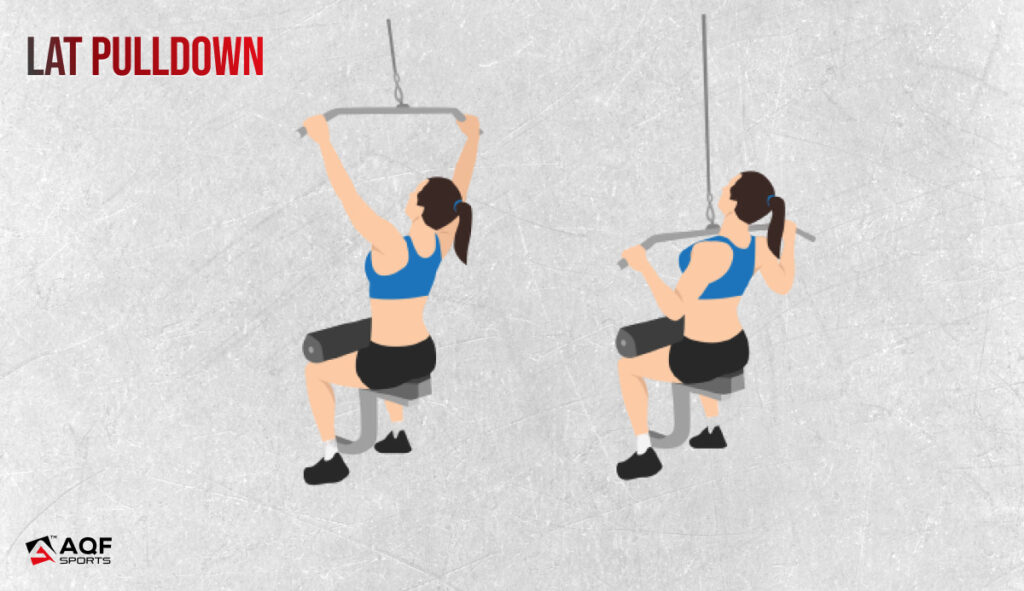
Instructions:
- Sit at the lat pulldown machine, grip the bar with hands wider than shoulder-width apart.
- Pull the bar down towards the chest while keeping the back straight.
- Slowly return to the starting position with control.
Benefits: Strengthens upper back muscles, improves posture, and enhances upper body strength.
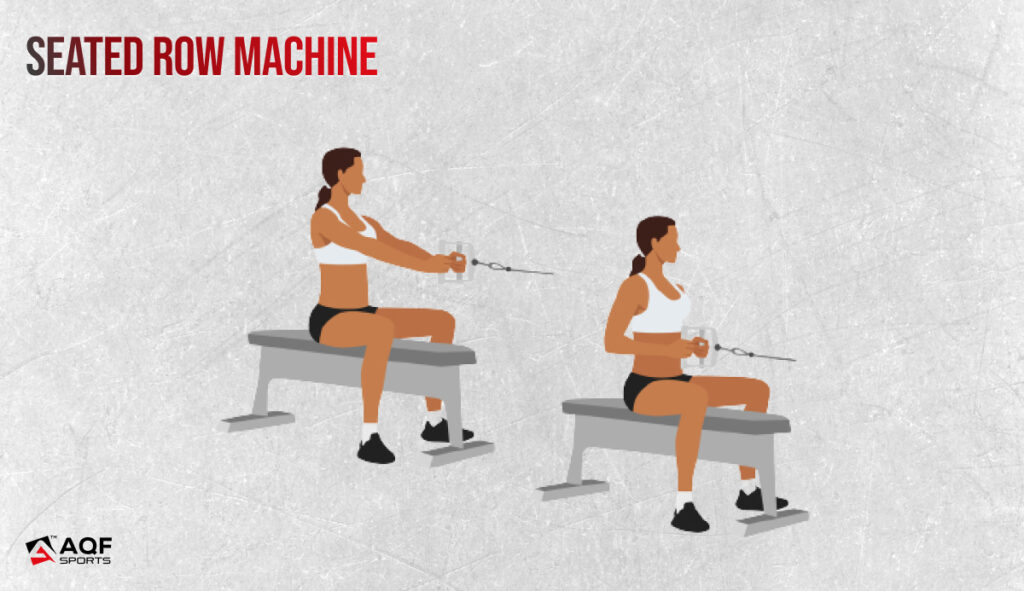
Chest Press Machine
Gym Accessories/Equipment: Chest press machine, comfortable attire, and weight plates.
Target Area: Works the chest muscles (pectorals), shoulders, and triceps.
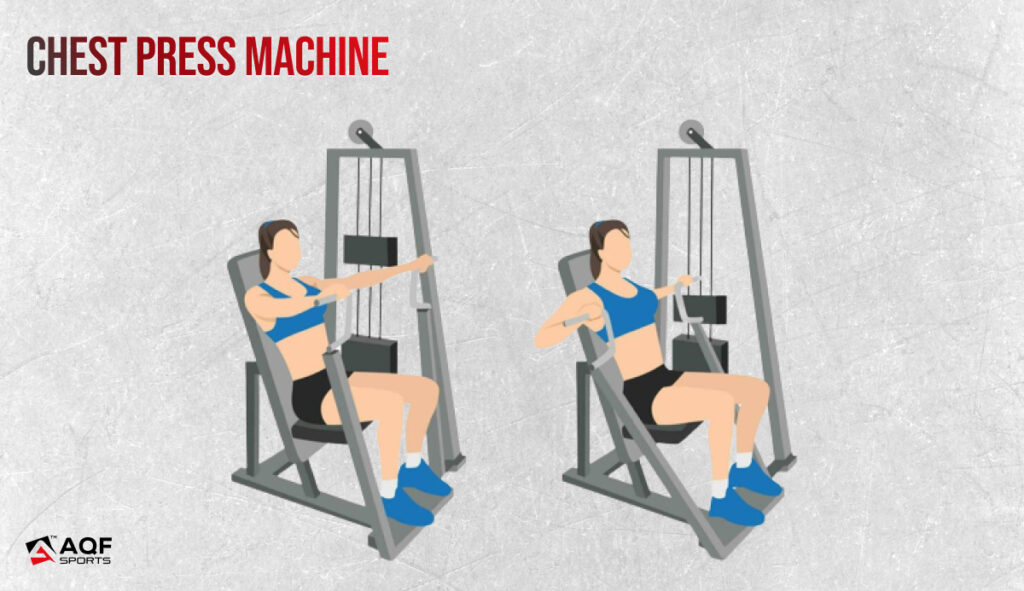
Instructions:
- Sit on the chest press machine, adjust the seat and select an appropriate weight.
- Grip the handles, push forward, and extend your arms fully without locking the elbows.
- Slowly return to the starting position.
Benefits: Builds chest strength, improves upper body endurance, and enhances overall upper body muscular balance.
Seated Row Machine
Target Area: Engages the back muscles, primarily the rhomboids, latissimus dorsi, and biceps.
Gym Accessories/Equipment: Seated row machine, comfortable workout attire.
Instructions:
- Sit at the row machine, adjust the seat and choose a suitable weight.
- Grasp the handles, pull them towards the torso while keeping the back straight.
- Slowly return to the starting position with control.
Benefits: Strengthens back muscles, improves posture, and aids in overall upper body strength.
What exercises are good for Women with PCOS belly?
Cardiovascular Exercises (e.g., Brisk Walking, Cycling, or Jogging)
Engage in 30-45 minutes of moderate-intensity cardio exercises, such as brisk walking, cycling, or jogging, most days of the week.
- Start with a 5-minute warm-up.
- Gradually increase pace to a brisk walk or light jog for 20-30 minutes.
- Cool down with a 5-minute walk.
Target Area: Aids in overall fat reduction, including the belly area.
Benefits: Burns calories, promotes weight loss, and reduces abdominal fat.
Gym Accessories/Equipment: Comfortable workout attire, supportive shoes, and access to suitable outdoor spaces or gym equipment.
Plank Variations
Target Area: Engages the entire core, especially the deep abdominal muscles.
Gym Accessories/Equipment: Exercise mat (optional), comfortable clothing.
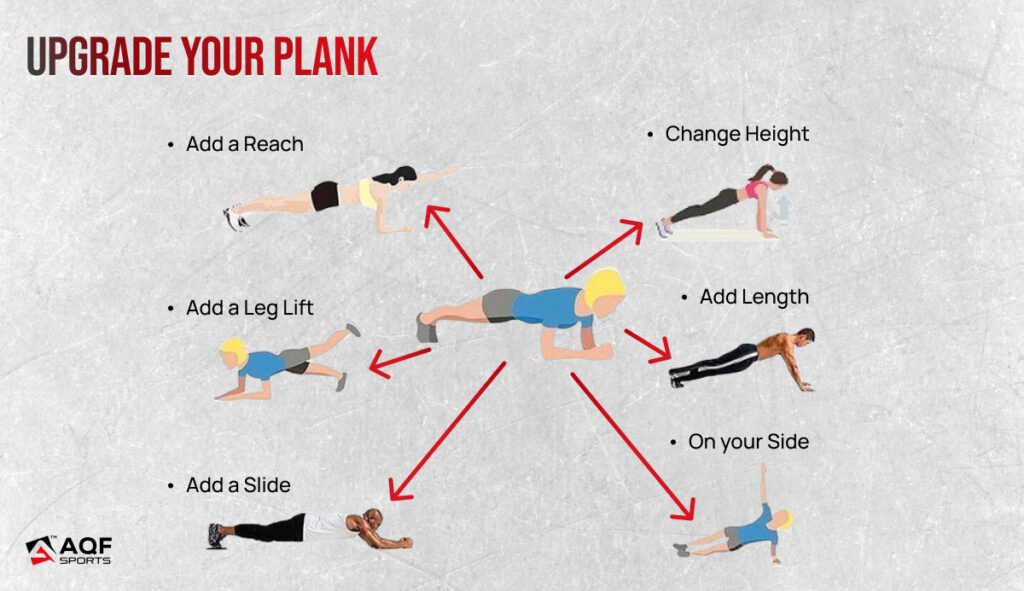
Instructions:
- Begin in a plank position on forearms and toes
- Keep a straight line from head to heels.
- Hold for 30-60 seconds.
- Variations include side planks or plank leg lifts.
Benefits: Strengthens core muscles, improves posture, and tightens the abdominal area.
Russian Twists
Target Area: Focuses on obliques (side abdominal muscles) and overall core strength.
Gym Accessories/Equipment: Medicine ball or weight (optional), exercise mat, comfortable clothing.
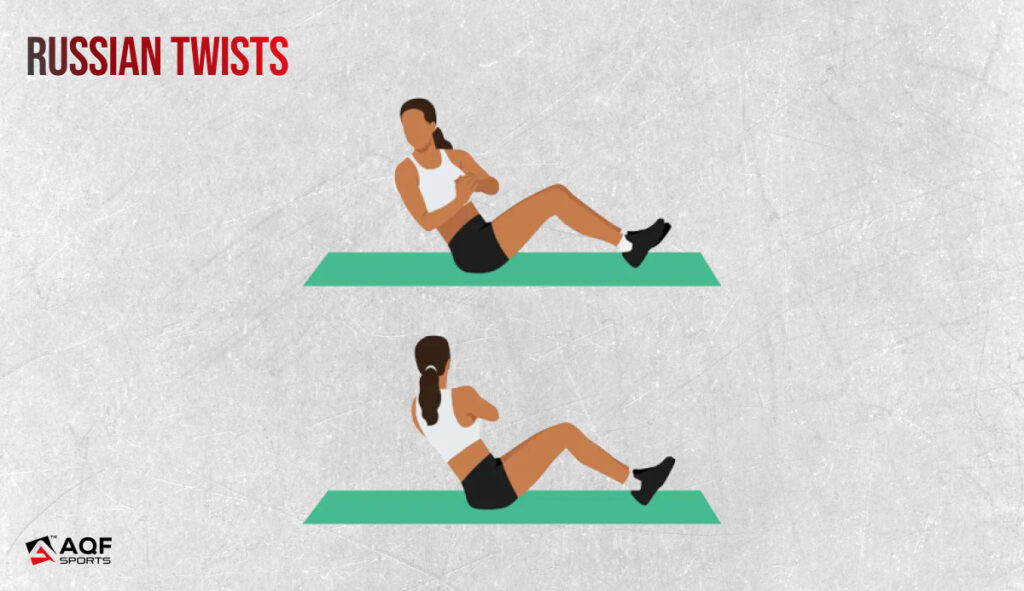
Instructions:
- Sit on the floor, knees bent, heels on the ground.
- Lean back slightly, engaging the core.
- Hold a weight or medicine ball.
- Twist the torso to touch the weight to the floor on each side.
Benefits: Tones oblique muscles, enhances core stability, and helps in reducing love handles.
Bicycle Crunches
Target Area: Engages rectus abdominis (frontal abdominal muscles) and obliques.
Gym Accessories/Equipment: Exercise mat (optional), comfortable clothing.
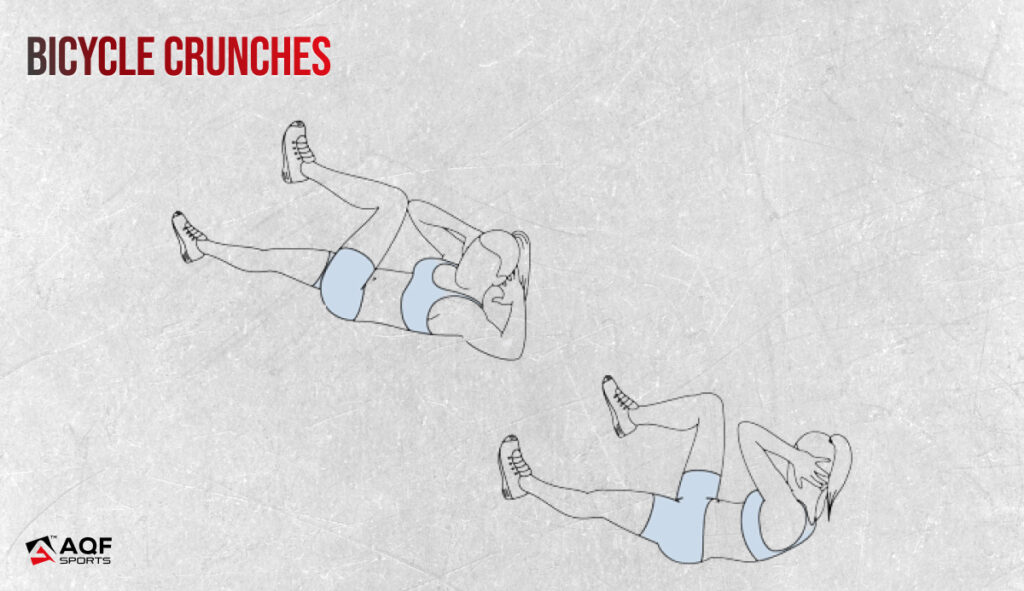
Instructions:
- Lie on your back, hands behind your head.
- Bring knees to a tabletop position.
- Alternate bringing opposite elbow to opposite knee in a cycling motion while extending the other leg.
Benefits: Strengthens core muscles, improves abdominal definition, and aids in toning the midsection.
Standing Side Crunches
Target Area: Focuses on obliques and helps trim the waistline.
Gym Accessories/Equipment: None required, but a comfortable workout area is beneficial.
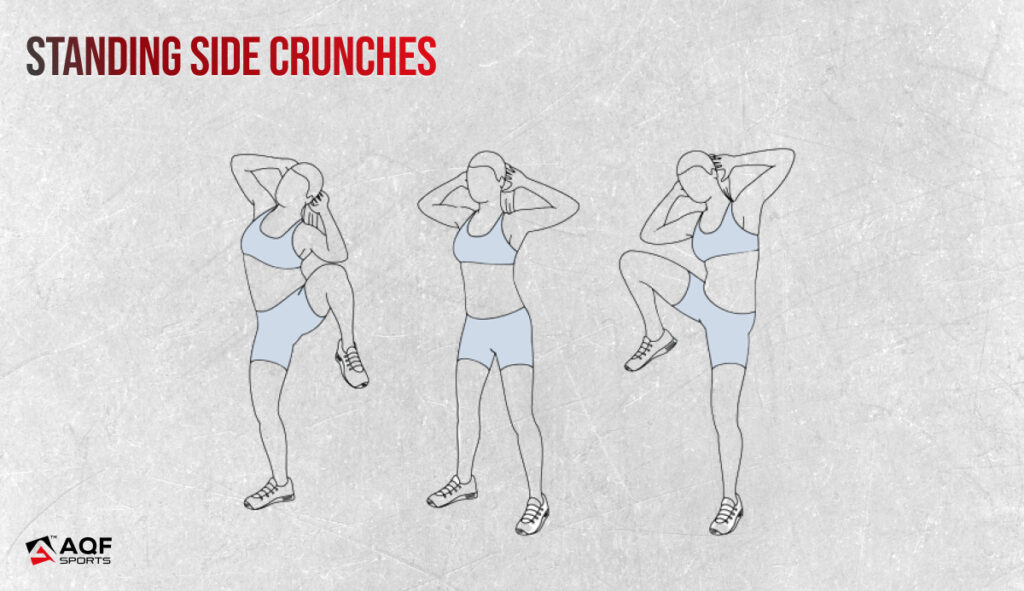
Instructions:
- Stand with feet shoulder-width apart, hands behind your head.
- Lean to one side while bringing the elbow towards the hip.
- Alternate sides.
Benefits: Tones side abdominal muscles, enhances core stability, and aids in reducing excess fat around the waist.
Exercises for Women with PCOS – FAQs
What kind of exercise is best for PCOS?
For PCOS, a combination of aerobic exercises (like brisk walking, cycling) and strength training (such as weight lifting or bodyweight exercises) works best. Aerobic exercises aid in weight management and improve insulin sensitivity, while strength training helps build muscle and boost metabolism.
How can I flatten my stomach with PCOS?
Following activities help in flattening PCOs stomach:
- Cardiovascular Exercise: Engage in regular cardio workouts like brisk walking, cycling, or jogging to burn overall body fat, including the abdominal area.
- Core Strengthening: Focus on exercises like planks, crunches, and twists to specifically target and strengthen the core muscles.
- Balanced Diet: Pair exercise with a balanced diet rich in whole foods, lean proteins, healthy fats, and complex carbohydrates to support weight loss and reduce belly fat.
Suggested Read: Your Guide to Ectomorph Body Type, Diet, and Workout Routine
The Bottomline
PCOs is a challenging health condition which can depreciate your quality of life greatly. While it looks like an uncontrollable hormone monster, the truth is that you can manage weight loss by doing effective exercises for women with PCOs regularly.
Discover More Topics
- How to Get Rid of Lower Belly Fat: Diet Tips and Exercises
- What Are The Best Foods To Eat For Muscle Growth?
- 12 Fat Burning Exercises to Lose Weight at Home
References:
[1] Obesity and Polycystic Ovary Syndrome






